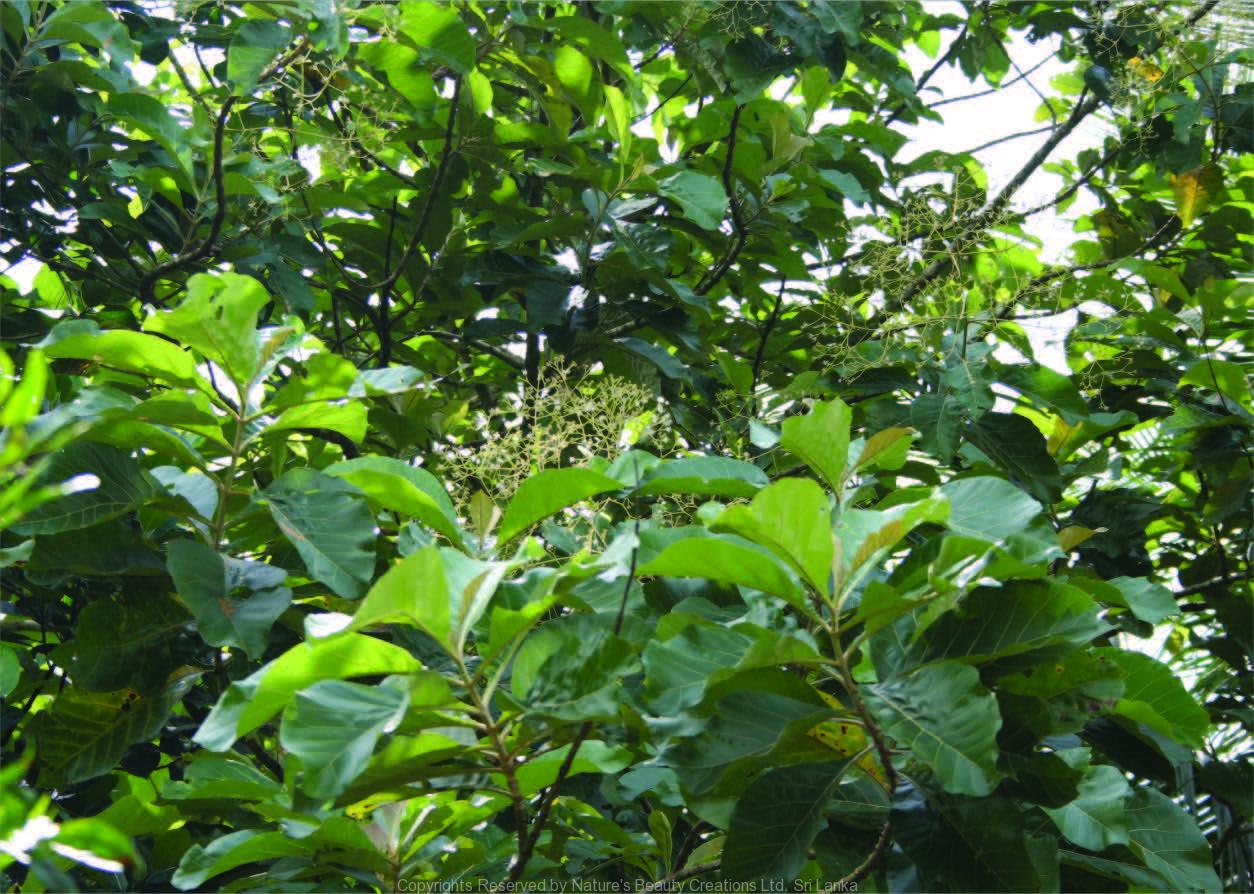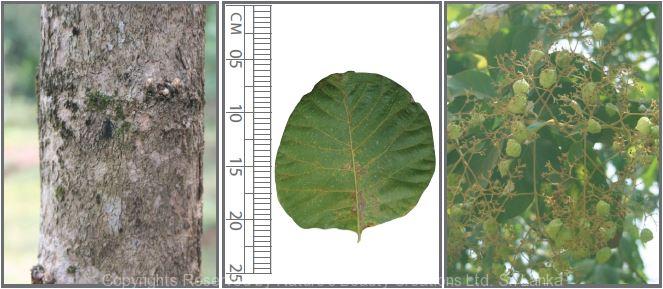

Traditional Knowledge
Useful plant parts :
Leaf, heartwood, bark and fruit
Uses in traditional medicine :
- Young leaf decoction is used as a mouthwash for bleeding gums, sore throat and remedy for spitting of blood
- Batakirilla leaf infusion containing heartwood powder is taken orally to control intestinal parasites in children
- Soothes itching skin and is useful for acute dermatitis
- Dried fruit powder promotes hair growth
Scientific Research
Chemical constituents:
Naphthaquinones: lapachol and its derivatives, dehydro α-isodunnione from root and heartwood; quinones: naphthotectone, anthratectone, tectone, methylquinizarin from leaves; steroidal glycoside and fatty acid esters from stem bark; phenolic glycoside: verbascoside, diterpenes: 2-oxokovalenic acid, 19-hydroxyferruginol, abeograndinoic acid and acidapocarotenoids: tectoionols A and B from plant
Bioactivity :
Lapachol: antiulcer; bark extract and tectone: antihyperglycaemic; leaf extract applied topically or administered orally: wound healing; methanol extract of flowers: antidiabetic, antihyperlipidaemic, antioxidative; petrolium ether extract of seeds: hair growth promoter; verbascoside: gastroprotective; methanol extract of bark: antibacterial
Clinical:
Note :
Wood is valuable as timber
References : Goel, R. K. et al., (1987), Effect of lapachol, a naphthaquinone isolated from Tectona grandis, on experimental peptic ulcer and gastric secretion, J Pharm Pharmacol, 39(2), 138-40. Gupta, P. K. and Singh, P., (2004), A naphthoquinone derivative from Tectona grandis (Linn.), J Asian Nat Prod Res, 6(3), 237-40. Jaybhaye, D. et al., (2010), Effect of Tectona grandis Linn. seeds on hair growth activity of albino mice, Int J Ayurveda Res, 1(4), 211-5. Khan, R. M. and Milungwana, S. M., (1999), 5-Hydroxylapachol: a cytotoxic agent from Tectona grandis, Phytochemistry, 50(3), 439–442. Khan, Z. et al., (2010), A new steroidal glycoside and fatty acid esters from the stem bark of Tectona grandis Linn, Nat Prod Res, 24(11), 1059-68. Lacret, R. et al., (2011), Anthratectone and naphthotectone, two quinones from bioactive extracts of Tectona grandis, J Chem Ecol, 37(12), 1341-8. Macias, F. A. et al., (2008), Bioactive apocarotenoids from Tectona grandis, Phytochemistry, 69(15), 2708-15. Macías, F. A. et al., (2010), Isolation and phytotoxicity of terpenes from Tectona grandis, J Chem Ecol, 36(4), 396-404. Majumdar, M. et al., (2007), Evaluation of Tectona grandis leaves for wound healing activity, Pakistan Journal of Pharmaceutical Sciences, 20(2), 120-4. Neamatallah, A. et al., (2005), An extract from teak (Tectona grandis) bark inhibited Listeria monocytogenes and methicillin resistant Staphylococcus aureus, Lett Appl Microbiol, 41(1), 94-6. Ramachandran, S. et al., (2011), Antidiabetic, antihyperlipidemic and antioxidant potential of methanol extract of Tectona grandis flowers in streptozotocin induced diabetic rats, Asian Pac J Trop Med, 4(8), 624-31. Shukla, N. et al., (2010), Tectone, a new antihyperglycemic anthraqui- none from Tectona grandis leaves, Nat Prod Commun, 5(3), 427-30. Singh, N. et al., (2010), Verbascoside isolated from Tectona grandis mediates gastric protection in rats via inhibiting proton pump activity, Fitoterapia, 81(7), 755-61. Varma, S. B. and Jaybhaye, D. L., (2010), Antihyperglycemic activity of Tectona grandis Linn. bark extract on alloxan induced diabetes in rats, Int J Ayurveda Res, 1(3), 163-6
Copyrights Reserved By
Natures Beauty Creations




